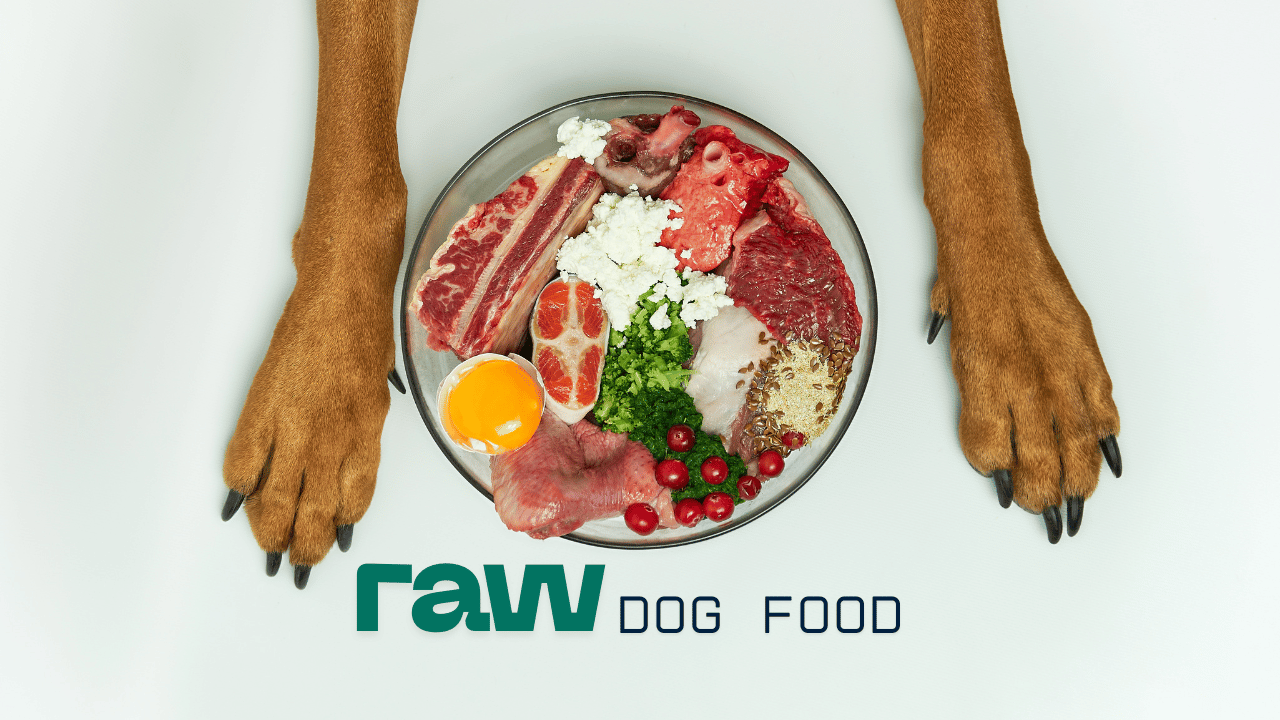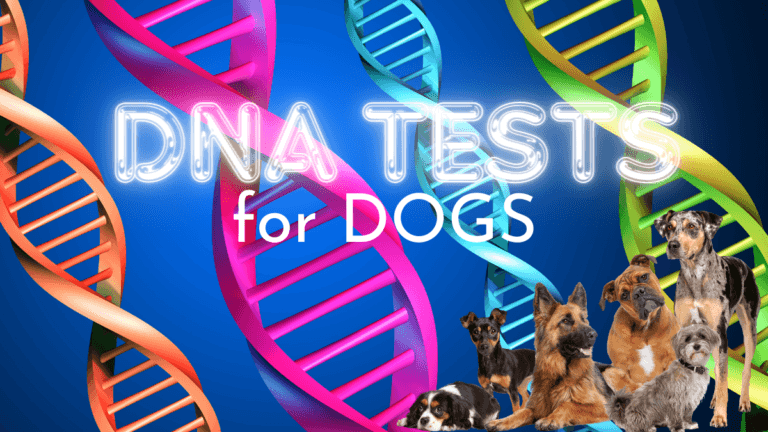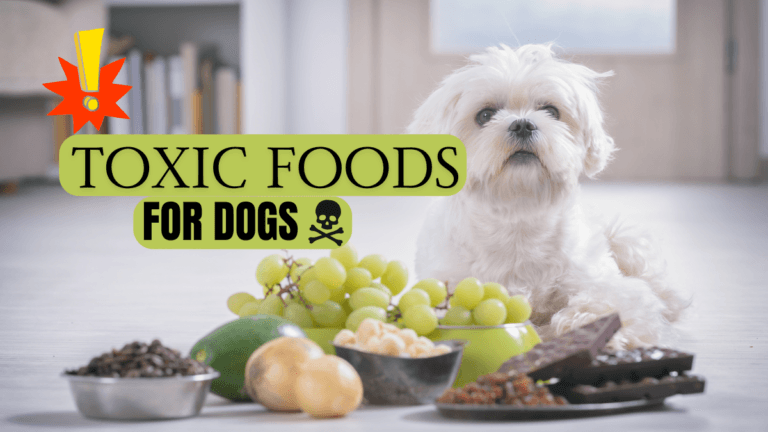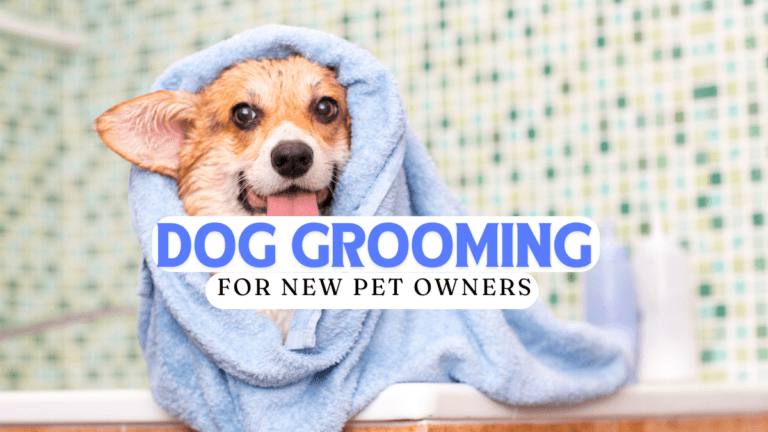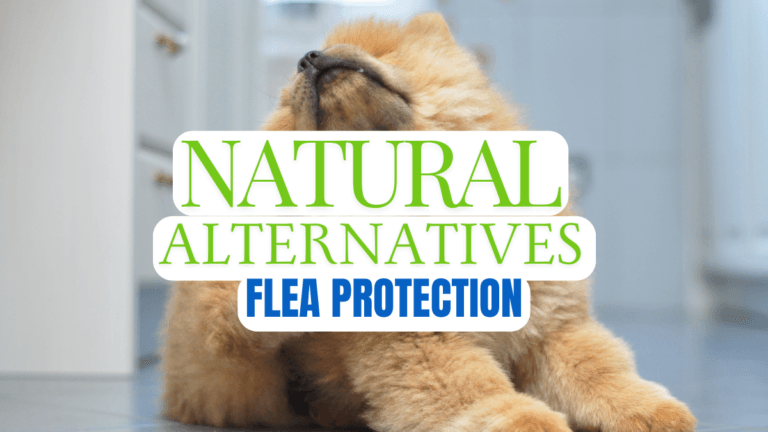Raw Dog Food Revealed: 9 Essential Truths Every Responsible Pet Owner Needs Before Switching
Raw Dog Food: The problem with raw feeding conversations is that both sides dig into extreme positions. Raw advocates claim it’s the only proper way to feed dogs and that kibble is poison. Anti-raw voices claim all raw feeding is dangerous and irresponsible. The truth lives somewhere in the middle.
Disclosure: This post contains affiliate links. If you click through and make a purchase, I may earn a small commission at no extra cost to you. I only recommend products I believe will genuinely benefit you and your pets.
Raw dog food is having a moment. Social media is flooded with testimonials from pet parents claiming their dogs transformed on raw diets. Shinier coats. More energy. Better digestion. Cleaner teeth. The before and after photos are compelling.
But here’s what those Instagram posts don’t show you: the veterinary warnings, the bacterial contamination studies, the nutritional deficiency cases, and the very real risks to both dogs and humans.
I’m not here to tell you raw feeding is good or bad. I’m here to give you the facts so you can make an informed decision for your specific dog in your specific situation. Because this isn’t a simple yes or no question, despite what passionate advocates on either side will tell you.
Raw feeding is controversial for legitimate reasons. It’s also growing in popularity for legitimate reasons. Let’s unpack all of it.
Related: Pet First Aid
What Actually Counts as Raw Dog Food?
Raw dog food means exactly what it sounds like. Uncooked ingredients that typically include muscle meat, organ meat, bones, and sometimes fruits, vegetables, eggs, or dairy products.
The modern raw feeding movement started in 1993 when Australian veterinarian Ian Billinghurst published a book arguing that dogs would thrive on what their wolf ancestors ate before domestication. He called it BARF, which stands for Biologically Appropriate Raw Food (or Bones and Raw Food, depending on who you ask).
His basic premise was that grain-based commercial kibble was harmful to dogs, and they’d be healthier eating raw meaty bones and vegetable scraps. The idea caught on, and now raw feeding has multiple camps with different philosophies.
The BARF diet includes raw meat, bones, organs, vegetables, fruits, eggs, and dairy. It’s meant to be about 60 to 80 percent raw meat with 20 to 40 percent coming from other ingredients.
The Prey Model Raw diet tries to replicate what a dog would eat if it caught and consumed an entire prey animal. That’s roughly 80 percent muscle meat, 10 percent organs, and 10 percent raw meaty bones. No vegetables or fruits.
Then there’s the Ketogenic Raw Food diet, which focuses on high fat, moderate protein, and very low carbohydrates.
Raw food comes in different formats too. Frozen raw food in patties, nuggets, or rolls needs to be kept frozen until you’re ready to thaw and serve it. Freeze-dried raw food has the moisture removed at low pressure, creating a shelf-stable product that you rehydrate with water. Some people make homemade raw diets from scratch using their own recipes and ingredients from the grocery store or butcher.
Commercial raw food companies have exploded in recent years. You can now get raw food delivered to your door on a subscription basis with pre-portioned meals calculated for your specific dog’s weight and activity level.
The variety of approaches means raw feeding looks different depending on who you talk to. That makes it hard to evaluate because you’re not really comparing apples to apples when someone says “I feed raw.”
What Raw Feeders Claim vs What Science Actually Shows
Talk to devoted raw feeders and you’ll hear consistent claims about the benefits. Their dogs have shinier coats. Healthier skin. Cleaner teeth with less tartar buildup. Higher energy levels. Better breath. Smaller, firmer stools. Improved digestion. Fewer allergies. Better weight management.
The testimonials are genuine. These people really are seeing changes in their dogs. The question is whether raw food specifically causes those changes, or whether something else explains the improvements.
Here’s what research actually shows. There have been some studies on raw diets, but not nearly enough to draw definitive conclusions about most claimed benefits.
Studies have found that dogs on raw diets do tend to have altered intestinal microbiomes compared to dogs on kibble. Whether that’s better, worse, or just different isn’t entirely clear yet. Some research suggests stool quality is subjectively better on raw diets, though “subjectively better” leaves a lot of room for interpretation.
The shinier coat thing has a simple explanation that has nothing to do with raw food being magical. Raw diets tend to be very high in fat. High fat diets produce shiny coats. You can get the same effect from high fat commercial kibble or by adding fat supplements to regular food. The raw part isn’t what’s causing the shiny coat.
Many of the other claimed benefits lack solid scientific evidence or identified plausible mechanisms for how they’d work. That doesn’t mean they’re false. It means we don’t have good research proving they’re true. Absence of evidence isn’t evidence of absence.
The problem is that raw feeding advocates often claim benefits for an extensive range of conditions including inflammatory diseases, infections, cancer, endocrine disorders, behavioral problems, and more. Those broad claims go way beyond what current evidence supports.
Anecdotal evidence matters. If thousands of dog owners independently report similar improvements when switching to raw, that’s worth paying attention to. But anecdotes can’t replace controlled studies, and they’re vulnerable to placebo effects, confirmation bias, and correlation versus causation confusion.
Some dogs probably do benefit from raw diets for reasons we don’t fully understand yet. Some dogs with food intolerances, inflammatory bowel conditions, or other digestive issues might genuinely improve on raw food. The issue is that we can’t make blanket statements about all dogs based on individual success stories.
What we can say is that if you switch from low quality kibble with lots of fillers to high quality raw food with excellent ingredients, your dog will probably show improvements. But is that because it’s raw, or because you upgraded from terrible food to excellent food? You’d likely see similar improvements switching to high quality cooked food or premium kibble.
The raw component itself hasn’t been proven to be the magic ingredient. It might be. We just don’t have the research yet.
The Risks Are Real and Well Documented
This is where things get serious. The risks of raw feeding aren’t theoretical. They’re documented in multiple peer-reviewed studies and confirmed by organizations including the FDA, CDC, American Veterinary Medical Association, and Canadian Veterinary Medical Association.
Bacterial contamination is the biggest concern. Raw meat contains pathogens. That’s not a maybe. It’s a fact. Studies consistently find Salmonella, E. coli, Listeria, and other dangerous bacteria in raw pet food samples.
A 2011 through 2012 study by the FDA screened commercially available raw dog foods. Nearly 25 percent tested positive for harmful bacteria including Salmonella and Listeria monocytogenes. One quarter of products. From commercial manufacturers who presumably have quality control procedures.
These bacteria can sicken your dog. They can also sicken you, your family, and other pets in your household. Dogs can carry and shed these bacteria without showing any symptoms themselves, making them silent carriers.
Salmonella causes about 1.2 million cases of food poisoning in humans every year in the US, with approximately 400 deaths. Symptoms include diarrhea, fever, and abdominal cramps starting 12 to 72 hours after exposure. Young children, elderly people, pregnant women, and immunocompromised individuals face the highest risk of severe illness.
Listeria is even more dangerous for certain populations. Pregnant women may only experience mild flu-like symptoms, but their babies can be born prematurely, stillborn, or develop severe infections. Up to one-third of newborns with listeriosis die despite aggressive treatment. The time between exposure and illness is about three weeks, making it nearly impossible to identify the source.
Your dog’s food bowl, your kitchen counter, your hands after handling raw meat, your dog’s saliva after they eat, their feces, anywhere the food touches becomes a potential contamination point. Even if you’re careful, cross-contamination happens.
The risk extends beyond bacteria. Nutritional imbalances are a major problem with raw diets, especially homemade ones. A study published in the Journal of the American Veterinary Medical Association found that approximately 60 percent of homemade pet food recipes had major nutritional imbalances.
Dogs need specific ratios of calcium to phosphorus for bone health. Too little calcium causes weak bones and skeletal problems. Too much vitamin A from excessive liver can cause vitamin A toxicity. Too much fat without enough protein can cause anemia. Getting the balance right is harder than it looks.
Even commercial raw diets don’t always get it right. Studies have found nutritional deficiencies or excesses in commercial raw foods that could cause serious health problems when fed long term. Veterinary nutritionists have documented cases of dogs developing poor coats, bad skin, weak bones, and other health issues from nutritionally unbalanced raw diets.
Raw bones present physical hazards. They can cause choking, break teeth, or puncture the digestive tract. Yes, dogs in the wild eat bones. Dogs in the wild also die from injuries and infections at much higher rates than domesticated dogs. “Natural” doesn’t automatically mean safe.
The AVMA, FDA, and CDC all explicitly discourage feeding raw or undercooked meat to dogs because of these documented risks. These aren’t organizations with financial incentives to push kibble. They’re basing their positions on actual evidence of actual harm.
If You Still Choose Raw: How to Minimize Risk
Some people weigh these risks and decide raw feeding is worth it for their situation. If that’s you, there are ways to make it safer.
Never feed homemade raw diets without consulting a veterinary nutritionist. Period. This isn’t optional. A nutritionist can formulate a recipe that’s actually complete and balanced for your dog’s life stage and health status. Guessing or following random internet recipes is how dogs end up with nutritional deficiencies.
Choose commercial raw foods that meet AAFCO nutritional standards. Look for a statement on the package saying the food is “complete and balanced” and meets AAFCO guidelines for your dog’s life stage. This isn’t a guarantee of perfection, but it’s better than products without any nutritional adequacy statement.
Look for brands that use High Pressure Processing, or HPP. This cold-pressure technique inactivates pathogens like Salmonella, Listeria, and E. coli without cooking the food or destroying nutrients. It’s essentially pasteurization without heat. HPP dramatically reduces bacterial loads and makes commercial raw food much safer than raw meat from the grocery store.
Buy from companies that source USDA-certified meat meant for human consumption, not feed-grade meat. The quality standards are higher and the contamination risk is lower.
Handle raw food like you’d handle raw chicken for your own dinner. Keep it frozen until you’re ready to use it. Thaw it in the refrigerator, never on the counter or in the sink. Don’t let it sit at room temperature. Throw away any uneaten food after your dog’s meal. Don’t leave it in the bowl.
Wash your hands thoroughly with soap and water before and after handling raw food. Clean and disinfect all surfaces, bowls, utensils, and anything else that touches the raw food. Use separate cutting boards and utensils for pet food and human food.
Don’t let your dog lick your face or mouth after eating raw food. Don’t let them lick open wounds or broken skin. Pick up feces immediately and dispose of it properly. Wash your hands after picking up poop.
Keep raw food separated from human food in your freezer and refrigerator. Use sealed containers. Don’t let raw juices drip onto other food.
These precautions reduce risk but don’t eliminate it. Even with perfect handling, feeding raw increases the likelihood of bacterial exposure compared to feeding cooked or heat-treated food.
Consider whether anyone in your household is at high risk. If you have young children, elderly family members, pregnant women, or anyone with compromised immune systems, the risk calculation changes. A healthy adult can probably fight off a Salmonella infection. A newborn baby or someone undergoing chemotherapy might not survive one.
Commercial Raw Food Brands Worth Considering
If you decide to go the commercial route, these brands have strong reputations and better safety protocols than buying raw meat yourself.
We Feed Raw uses USDA-certified meat from animals raised for human consumption. Their facility is BRC certified for food safety because it handles human food as well as pet food. Every packet goes through high pressure processing to inactivate pathogens. Their recipes meet AAFCO guidelines for all life stages including large breed puppies. They deliver pre-portioned frozen patties or freeze-dried chunks based on a customized meal plan for your dog. It’s not cheap, starting around six to twelve dollars per day depending on your dog’s size, but the quality and safety protocols justify the price for people committed to raw feeding.
Stella & Chewy’s makes freeze dried raw food patties and meal mixers using 95 percent meat, organs, and bones with the remaining 5 percent from fruits and vegetables. They source from trusted farmers and ranchers, manufacture in the USA, and send every batch to third-party testing facilities. Their products are more affordable than some competitors while maintaining quality standards. The freeze-dried format is shelf-stable and easier to store than frozen options.
Instinct offers both frozen raw food and freeze-dried options in various protein sources including chicken, beef, lamb, and fish. They have puppy-specific recipes and single-protein formulas for dogs with food sensitivities. Their frozen raw bites are nugget-shaped and thaw faster than patties, making them more convenient for daily feeding. Pricing is moderate compared to other commercial raw brands, around 40 cents per ounce for frozen options.
Primal follows the BARF model with formulas containing 60 to 80 percent raw meat and 20 to 40 percent vegetables, fruits, eggs, and dairy. They sell frozen rolls called chubs in 12, 24, or 48-pound cases. Recipes meet AAFCO standards for all life stages. They’ve been in the raw food business since the beginning of the commercial raw food movement and have established quality control procedures.
BARF World literally pioneered the BARF diet concept for commercial pet food. They offer various flavors primarily consisting of muscle meat, organ meat, and raw bones. Products are frozen and formulated to meet AAFCO nutrient levels for dogs at all life stages.
When comparing brands, look for transparency about sourcing, clear AAFCO nutritional adequacy statements, validated pathogen reduction processes like HPP, and positive track records without recalls. Check whether they use feed grade or human grade ingredients. Verify their manufacturing facilities meet food safety standards.
The Cost Reality Nobody Talks About
Raw feeding is expensive. There’s no way around it.
Commercial raw food typically costs anywhere from two dollars per day for a small dog to twelve dollars or more per day for a large dog. Compare that to premium kibble at around two dollars per day for a 60-pound dog, or mid-range kibble at even less.
For a 60-pound dog, you’re looking at roughly 150 to 300 dollars per month for commercial raw food versus 60 dollars per month for premium kibble. That’s an extra 1,000 to 3,000 dollars per year.
Homemade raw diets can be cheaper if you buy meat on sale and prepare it yourself, but you need to factor in the cost of supplements, the time spent preparing and portioning meals, the freezer space required, and the consultation fees for a veterinary nutritionist to formulate a proper recipe.
Some raw feeders argue the cost pays off in reduced veterinary bills over time because their dogs stay healthier. That’s possible but impossible to prove for individual dogs. Genetics, exercise, environmental factors, and luck all play roles in canine health outcomes. You can’t isolate diet as the sole variable.
The honest answer is that raw feeding is a premium option that requires financial commitment. If the budget is tight, there are ways to improve your dog’s diet without going fully raw. High-quality kibble with fresh food toppers, cooked homemade meals supplemented properly, or freeze-dried raw as a small percentage of the diet can all provide benefits at a lower cost.
Don’t bankrupt yourself trying to feed raw. Your dog needs you to be financially stable more than they need raw food.
Making the Switch: Do It Right or Don’t Do It
If you’ve weighed everything and decided to try raw feeding, transition slowly. Don’t just dump out the kibble and start serving raw meat tomorrow.
Start by talking to your veterinarian. Yes, many vets are skeptical of raw diets. That’s because they’ve seen the problems. But a good vet will work with you to make the safest plan possible if you’re committed to trying raw. They can help you choose appropriate products, monitor your dog’s health during the transition, and catch problems early.
Begin with small amounts of raw food mixed into your dog’s current diet. Maybe 10 to 20 percent raw to start. Gradually increase the proportion of raw over seven to ten days or longer if your dog has a sensitive stomach.
Watch for digestive upset, including vomiting, diarrhea, or excessive gas. Some dogs take weeks to fully adjust, especially if they’ve been eating kibble for years. Their digestive systems need time to adapt.
Not every dog is a good candidate for raw feeding. Puppies and senior dogs have different nutritional requirements and may be more vulnerable to bacterial infections. Dogs with compromised immune systems, kidney disease, liver disease, or pancreatitis may need cooked food instead of raw. Dogs with existing digestive issues might improve on raw or might get worse. It’s individual.
Monitor your dog’s weight, energy level, coat quality, stool consistency, and overall demeanor. Take notes so you can track changes objectively rather than relying on memory. Schedule a checkup with your vet after a few months on the new diet to make sure everything looks good from a medical perspective.
If your dog isn’t thriving on raw, it’s okay to switch back or try something else. Raw feeding isn’t the only path to good nutrition. It’s one option among many.
The Bottom Line Nobody Wants to Hear
Raw dog food isn’t inherently good or bad. It’s a choice with tradeoffs.
The potential benefits include fresher ingredients, higher protein, lower carbohydrates, and the possibility of improvements in digestion, coat quality, and energy levels. The documented risks include bacterial contamination, nutritional imbalances, physical hazards from bones, and higher cost.
For some dogs in some situations with dedicated owners who follow strict safety protocols and use high-quality commercial products, raw feeding can work well. For other dogs, or in households with vulnerable people, or with owners who can’t maintain perfect food handling hygiene, the risks outweigh the benefits.
The problem with raw feeding conversations is that both sides dig into extreme positions. Raw advocates claim it’s the only proper way to feed dogs and that kibble is poison. Anti-raw voices claim all raw feeding is dangerous and irresponsible. The truth lives somewhere in the middle.
Your dog is an individual. Your household is unique. Your risk tolerance, budget, and commitment level are yours alone. What works for someone else’s dog might be terrible for yours. What’s safe in someone else’s home might be risky in yours.
The goal isn’t to find the one perfect diet that works for every dog. The goal is to find the best diet for your specific dog that you can execute consistently and safely.
Do your research. Talk to your vet. Consider your dog’s health status and your family situation. Evaluate whether you can maintain the necessary food safety protocols. Calculate whether the cost is sustainable long-term. Be honest about your commitment level.
If you choose raw, commit to doing it right. Use commercial products with proper safety testing, follow AAFCO guidelines, maintain strict hygiene, and monitor your dog’s health closely.
If you choose not to feed raw, don’t let anyone shame you. There are plenty of ways to provide excellent nutrition without raw food. High-quality kibble, fresh cooked food, or a combination approach can all support a long, healthy life for your dog.
The most important thing isn’t whether your dog eats raw or cooked food. It’s whether they’re getting complete balanced nutrition appropriate for their life stage, whether their diet supports their individual health needs, and whether feeding them fits sustainably into your life.
Your dog doesn’t care about the philosophy behind their food. They care about how they feel, whether they’re hungry, and whether you’re there with them.
Feed them well in whatever way works for your situation. That’s what responsible pet ownership actually looks like.
For detailed scientific research on raw pet food diets including microbiological hazards and nutritional considerations, see this comprehensive review published in the Journal of Small Animal Practice: Raw diets for dogs and cats: a review

